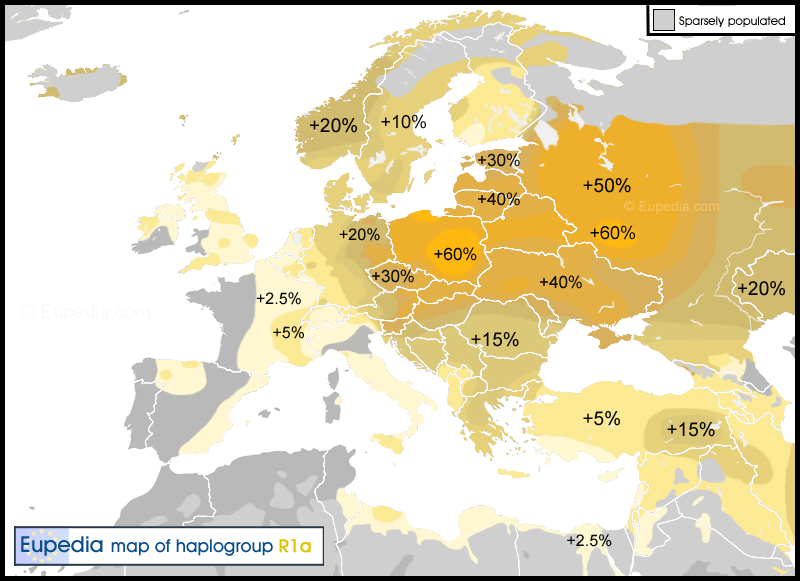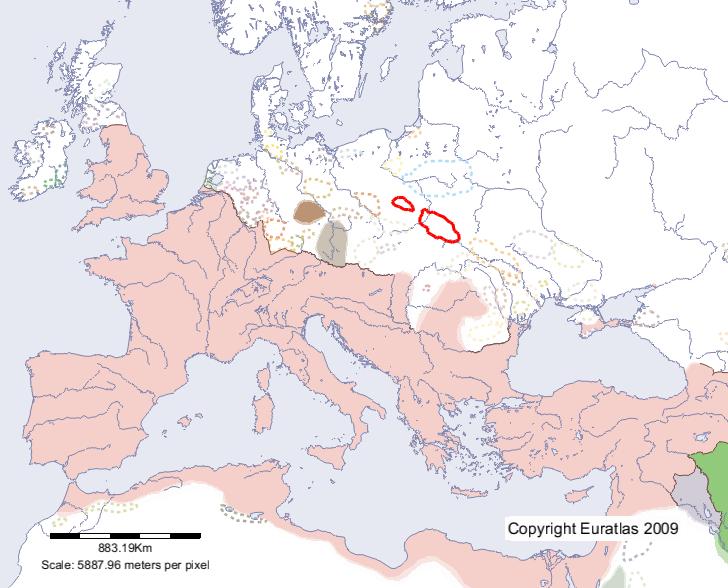I think you're right about the modern Germanic peoples, at least if we're talking about West Germanic peoples, who probably have a significant amount of ancestors who spoke Celtic of some sort. I'm not convinced that that's the case with North Germanic peoples, though, and they have R1b, as well.
It's probably more like 17 or 18 thousand, actually, if we're talking the gap between the I1 and I TMRCA, now that I look at Nordtvedt's tree. I1 people were probably hunter-gatherers for a long time, remaining a small population or bottlenecking severely, and not joining an expansion until late. Contrast that with I2a1a peoples, who apparently merged with expanding G2a farmers in the Neolithic, and consequently have the oldest TMRCA of the major Haplogroup I branches.
I agree with this. Although there are also R1a-heavy populations that are non-Indo-European, so we should be careful. The presence of a different ethnicity with the same haplogroup does not preclude the ethnicity in question from having originated from a population with predominantly that haplogroup.





